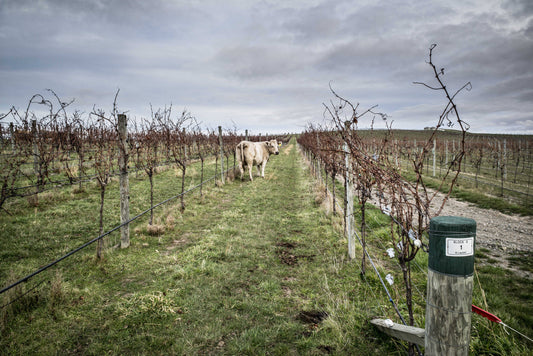| As red wine remains the focus in Crozes-Hermitage, I looked for six characterful Syrahs that show what the winemakers of this appellation are capable of achieving. In comparison with Hermitage, you may find less subtlety, minerality and precision in the wines, but why compare? The differences are reflected in prices. The top Crozes-Hermitage reds come from a variety of terroirs. Some are single-vineyard bottlings while other are complex blends. But they are all versatile and can be enjoyed soon after release with only a little buyer’s remorse. If you think you should have waited five or 10 years more, just buy another bottle. Or two...
Yann Chave Le Rouvre 2015
Made from 65-year old vines growing in the alluvial soils of Les Châssis in Mercurol, Le Rouvre spends a year in oak demi-muids. The 2020 has an attractive mix of iron and violets with powdery tannins. The complexity of the cuvée emerges slowly, and the 2015 is now intriguingly smoky, with rich black fruit and perfect palate weight.
‘I don’t like sweetness in wine but balance and body. Strong but not too strong.’ – Yann Chave
Domaine Paul Jaboulet Ainé Domaine de Thalabert 2017
Thalabert is a vast 45-hectare plot in Mercurol where pebbly limestone supports 40- to 60-year old vines. In the middle of it all rests Clos Gounon, two hectares of protected wildlife that serve as a reminder of owner Caroline Frey’s commitment to biodiversity. Aged in oak for a year, the 2017 has a liquorice-spice perfume, mineral lift and silky tannins.
‘Thalabert is a unique wine that surprises me every day. The best experience I had with a Crozes-Hermitage was a magnum of ’78 Thalabert in 2019. It was incredible.’ – Jean-Luc Chapel.
Domaine Gilles Robin Cuvée 1920, vintage 2019
Named for the year that Gilles’ great-grandfather purchased his first hectare, this cuvée is made from old vines, some of which were planted in 1956. After 60 percent destemming the grapes undergo a 40-day vinification and 18 months ageing in oak demi-muids. Enjoy the contrasts of spicy black pepper and opulent fruit in an elegant, complex wine.
‘This is very different from our other cuvées because it’s from grapes planted on granite, which gives freshness, minerality and more spice. We started making it in 2001 and only do it in the best vintages. Gilles says that, when he opens a bottle, he likes it if he can finish it easily.’ – Fabienne Robin
Domaine Belle Cuvée Louis Belle 2019
The old vines grown in Larnage’s white clay and limestone soils – known as kaolin – give this cuvée precision along with rich, concentrated notes of liquorice and mocha. It is a linear, refreshing red that is only 40 percent destemmed. Roughly 3 percent of the vineyard is co-planted with Marsanne and both varietals are harvested at the same time.
‘This cuvée is a radically different face of Crozes-Hermitage. There is power but also delicacy and the tannins are very fine.’ – Philippe Belle
Domaine Laurent Habrard Cuvée Sylvain 2019
This tête de cuvée is joyously fruity, with pepper, spice and plenty of life. A blend of different terroirs, the wine has a saline character from a parcel planted on granite. Laurent does not predetermine the blend but waits until after vinification, tasting and tinkering to get the right combination. The 2019 was named after his viticulturalist.
‘Each vintage, I make a special cuvée in honour of my workers, because always we talk about the winemaker and yet there is a whole team here that no one knows about. Since I stopped using sulphites the wine is more expressive, open and ample.’ – Laurent Habrard
Maison M Chapoutier Sicamor 2020
This is an excellent wine to end a tour of Crozes-Hermitage reds, as it is a mixture of different terroirs, ranging from pebbles to granite to kaolin, and can be enjoyed at various stages in its evolution. Since the name of the cuvée refers to the iron ring that surrounds a wine barrel, it is fitting that the grapes come from vineyards around the Hermitage hill. Aged a year in demi-muids, then another six months in cement, there is a touch of gunflint in the nose to go with oregano, thyme and fresh black fruit. Light-bodied with a dry, clean finish.
‘We strongly believe that we build quality in the vineyard. In winemaking we are very traditional. We just try to reveal the terroir.’ – Maxime Chapoutier
Read Crozes-Hermitage: Out of the Shadows (Part One) here.
Andrew James is a professor of English literature at the School of Commerce at Meiji University in Tokyo, Japan. He is currently on sabbatical leave in France at Université Grenoble Alpes in France in order to write a book on Bandol wine. His great interest as a wine researcher is understanding the evolution of wine-speak, and the reflection of culture in wine language.
|



